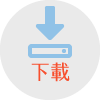簡易檢索 / 詳目顯示
| 研究生: |
李俊德 Chun-Te Lee |
|---|---|
| 論文名稱: |
綠色電子產品開發策略—以某3C科技品牌為例 Green electronic products development strategy – A case study of 3C own-brand technology company |
| 指導教授: |
王孔政
Kung-Jeng Wang |
| 口試委員: |
林久翔
Chiu-Hsiang Lin 梁瓊如 Chiung-Ju Liang |
| 學位類別: |
碩士 Master |
| 系所名稱: |
管理學院 - 管理研究所 Graduate Institute of Management |
| 論文出版年: | 2016 |
| 畢業學年度: | 104 |
| 語文別: | 中文 |
| 論文頁數: | 65 |
| 中文關鍵詞: | 電子廢棄物 、碳排放 、企業社會責任 、生命週期評估法 、WEEE 、ROHS 、EuP 、環保標章 、全球暖化 |
| 外文關鍵詞: | EuP, Life Cycle Assessment (LCA), Green Mark, Global Warming |
| 相關次數: | 點閱:535 下載:18 |
| 分享至: |
| 查詢本校圖書館目錄 查詢臺灣博碩士論文知識加值系統 勘誤回報 |
隨著電子產品的迅速汰舊換新,帶來了數量龐大的電子廢棄物。如何透過環境友善(Eco friendly) 的綠色設計,使產品符合低碳排放和低污染的要求,並減少電子廢棄物對環境所帶來的嚴重影響,是本研究的主要研究方向。本研究以個案研究法,探討一家3C (Computer, Consumer, Communication)電子公司開發綠色電子產品的過程,及實施綠色產品設計時,所應達成的量化指標。這些指標主要是由兩個來源,一個是來自於歐盟(EU)--針對電子產品的強制性環保規範,也就是歐盟的三大環保指令「WEEE, RoHs, EuP」,以規範那些要在歐盟銷售的電子產品;另一個來源則是參考 「全球永續性報告」指南中的「環境績效指標」,這也是個案公司於2008年初次發佈的「企業社會責任報告書」的重要依據。依此,個案公司得以制定通用於各產品線的綠色設計衡量指標。此外,個案公司採用「生命週期評估法」為綠色設計之主要流程,此流程依產品之材料選用、生產、配送、使用及最後的廢棄回收等不同階段,以之前定好的量化指標來考量產品設計是否符合節能、減碳及低污染的要求。最後再藉由申請各銷售國家或地區的環保標章,來作為與消費者溝通與行銷的語言,以此來增進產品競爭力。本研究結果顯示,個案公司由綠色產品開發開始,一方面達成了產品差異化,另一方面也強化了「企業社會責任報告書」上對於環保的積極作為,並逐步將公司轉化成為一個綠色企業,以此呼應日益受到重視的全球暖化(Global Warming) 議題。
Rapidly replacement of electronic products brings a huge number of e-waste, and also makes significant impact to the environment. Through eco-friendly design of electronic products to meet the requirements of low-carbon emissions and low pollution is the main research objective of this thesis. In this research of case study, case company defined the quantitative indicators of green electronic design to follow up. The indicators are based on two aspects. The first one is a mandatory environmental requirement from EU for electronic products. It includes three major European environmental directives (WEEE, RoHs, EuP) to regular the products when shipping to EU. The other aspect refers to the environmental performance indicators in the GRI Sustainability Reporting Guidelines by which the case company was publishing in their CSR in 2008. According to these indicators, the case company generates the common rules to each product line in green products desige metrics to fulfill their green design development. The design process adopted in this case is called life cycle assessment, which processes according to different stages of product’s life from material selection, production, distribution, usage and e-waste recycling, to use pre-defined green design indicators to evaluate the energy-saving, carbon emissions reduction and pollution minimum of the products. After the design is completed, depending on country or region one can apply Green mark. It is a good communication and marketing tool with customers, and enhances the competitiveness of products when sale out. Starting with green products development, case company achieves product differentiation, and strengthens the the environmental performance indicators in their corporate social responsibility report more aggressively, and transforms into a green enterprise. This situtaion also echoes the growing global warming issues.
中文部份
MBA Lib 智庫百科 (2016), 綠色壁壘, http://wiki.mbalib.com/zh-tw/%E7%BB%BF%E8%89%B2%E5%A3%81%E5%9E%92
中研院溫室氣體資料庫 (2016) http://webgis.sinica.edu.tw/epa/epa.html
中國中山大學人類學系(2003) 綠色和平組織合作專案, 汕頭貴嶼電子垃圾拆解業的人類學調查報告,中國中山大學人類學系
全球永續報告協會 (2006),「永續性報告指南第三版 (G3)中文版」,Global Reporting Initiative,http://www.bcsd.org.tw/sites/default/files/node/domain_tool/322.file.652.pdf
安品科技 (2016), RoHS危害性物質限制指令簡介(2011/65/EU), http://my.so-net.net.tw/asplab/V1_Europe/RoHS/EU_RoHS.htm
行政院環保署(2016) 生活廢棄物質管理資訊系統/環保百科/源頭減量/包裝減量/生命週期評估, 什麼是綠色包裝設計 │ 綠色包裝設計實例, http://hwms.epa.gov.tw/dispPageBox/pubwaste/pubwasteCp.aspx?ddsPageID=PACKAGED&&dbid=3111112715
行政院環保署(2016), 全球環保標章網路組織, http://greenliving.epa.gov.tw/Public/GreenMark/International
來新陽 (2006),RoHS與EuP二項歐盟指令之過程管理系統標準發展與驗證市場評估,中技社 http://www.ctci.org.tw/public/Attachment/8112716355871.pdf
林俊成、鄭美如、劉淑芬、李國忠 (2002) ,全民造林運動二氧化碳吸存潛力之經濟效益評估,農委會林業試驗所出版「台灣林業科學」第17卷3期
林敬智 (2006),WEEE回收率定義之初探,工業技術研究院環安中心
美國能源之星(2016) https://www.energystar.gov/
財團法人塑膠工業技術發展中心/相關資訊 (2016), 電子產品環境評估工具(EPEAT), http://pcrp.pidc.org.tw/info.php?ArticleId=156
財團法人環境資源研究發展基金會 (2012),綠色生活及消費指引,行政院環境保護署
高惟亮 (2012),CSR報告書建制說明會:CSR報告書製作實務,台灣產業服務基金會
設計風 (2016), PLA聚乳酸樹脂, http://www.edesignfun.com/plastic/pls/pls1_24/pls1_24.html
經濟部中小企業處 (2013),掌握永續的力量:第二章 綠色行銷,經濟部
經濟部中小企業處(2006),中小企業因應歐盟環保指令的經濟分析,載於95年中小企業白皮書 第七章, http://www.moeasmea.gov.tw/public/Attachment/75180283071.pdf
經濟部能源局 (2014),103年我國電力排放係數,經濟部能源局http://web3.moeaboe.gov.tw/ecw/populace/content/wHandMenuFile.ashx?menu_id=365
資料來源: https://www.energystar.gov/
綠色和平組織(2014),2014 綠色電子產品報告指南 - 報告摘要,綠色和平組織網站 https://secured-static.greenpeace.org/taiwan/Global/taiwan/planet3/publications/ reports/2014/green_gadgets.pdf?_ga=1.109016066.1652397123.1455958162
環保署(2015),溫室氣體減量及管理法,出版地:作者 http://www.epa.gov.tw/public/Data/56178474371.pdf
聯合國氣候變化框架公約( 1998),《京都議定書》中文版,UNFCCC 網站 http://unfccc.int/resource/docs/convkp/kpchinese.pdf
聯合國氣候變化框架公約(2015),《巴黎協議》中文版,UNFCCC 網站 https://unfccc.int/resource/docs/2015/cop21/chi/l09c.pdf
謝德勇 (2013),歐盟碳排放交易制度之缺陷分析,工業技術研究院 綠能與環境研究所
英文部份
American Soybean Association (2016), Soy Ink Seal, https://soygrowers.com/news-media/soy-ink-seal/
Climate Central (2015), A major milestone: 1°C, http://www.climatecentral.org/gallery/graphics/a-major-milestone
Energy star (2016), https://www.energystar.gov/
European Union (2003), Directive 2002/95/EC of the European parliament and of the council, Official Journal of the European Union
European Union (2003), Directive 2002/96/EC of the European parliament and of the council, Official Journal of the European Union
European Union (2008), Directive 2005/32/EC of the European parliament and of the council, Official Journal of the European Union
Fujitsu group (2008), 2008 Sustainability Report, Fujitsu group
Greenpeace organization (2008), Guide to Greener Electronics 9th edition, Greenpeace organization
Intergovernmental Panel on Climate Change (2007), IPCC Fourth Assessment Report: Climate Change, IPCC
Internation chamber and shipping (2014), Shipping, World Trade and the Reduction of CO2 Emissions, UNFCCC
International Standard Organzation (1997), ISO14040: Environmental management - Life cycle assessment - Principles and framework, ISO
Toshiba group (2008), Toshiba Group Environmental Report 2008, Toshiba group
United Nations Framework Covention on Climate Change (2009), Copenhagen Accord, http://unfccc.int/resource/docs/2009/cop15/eng/l07.pdf
